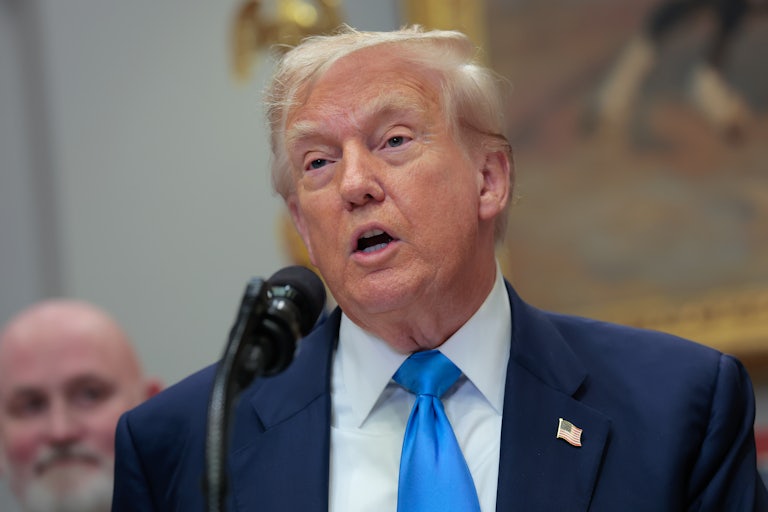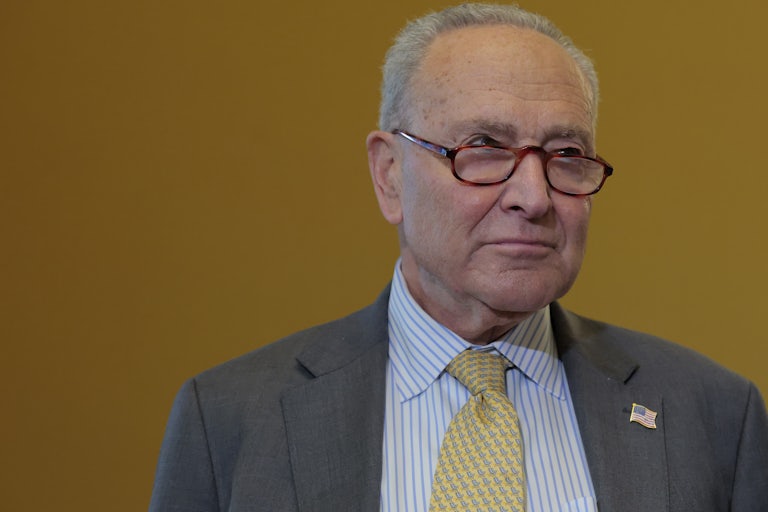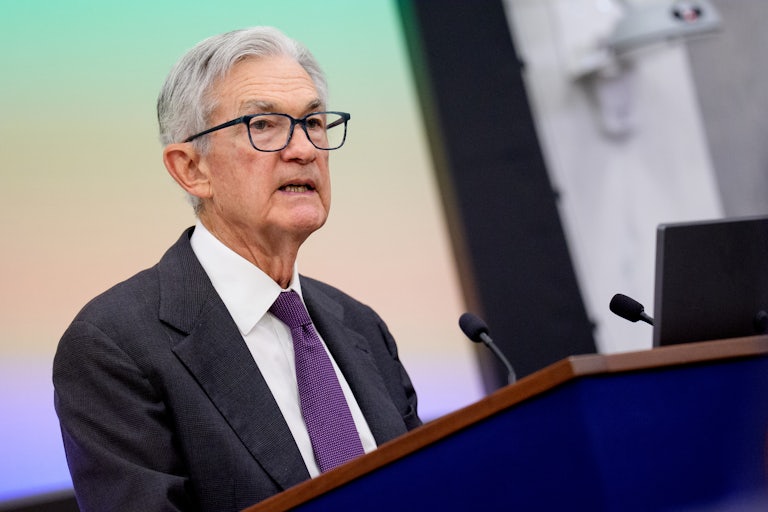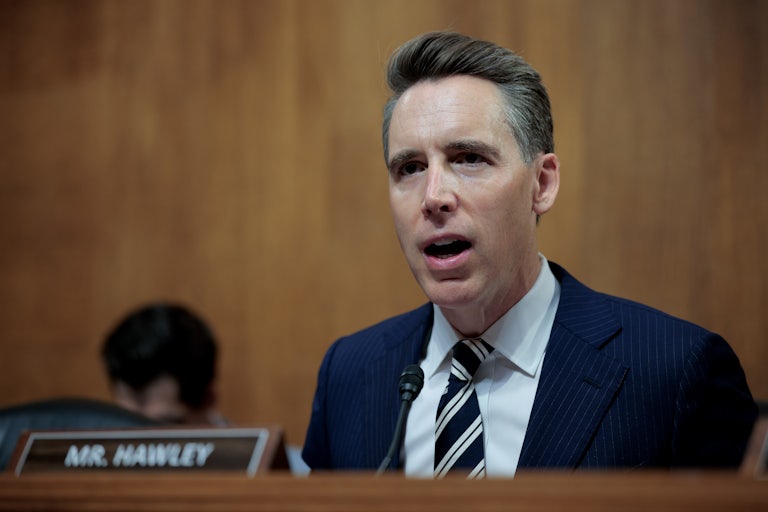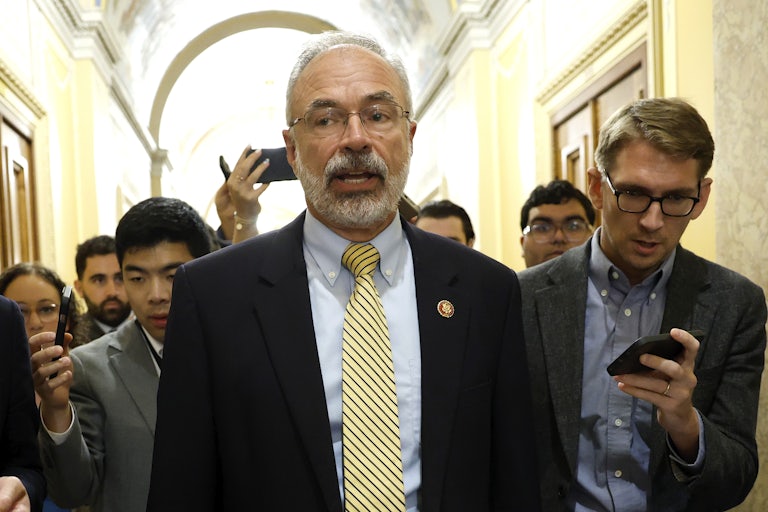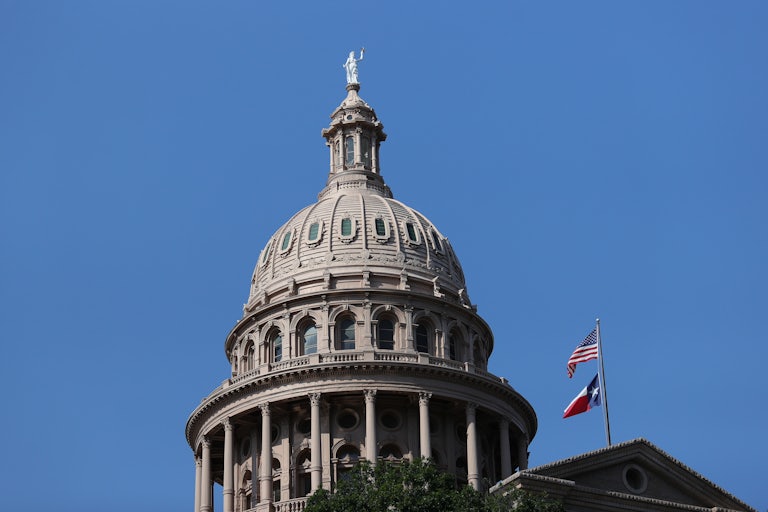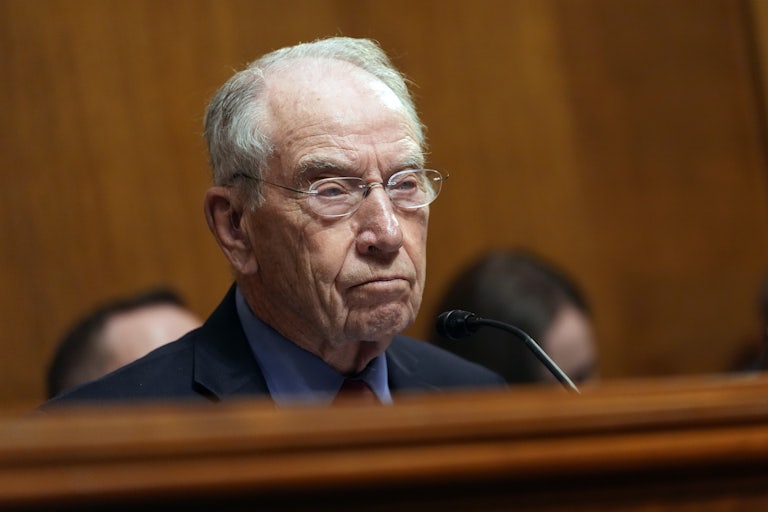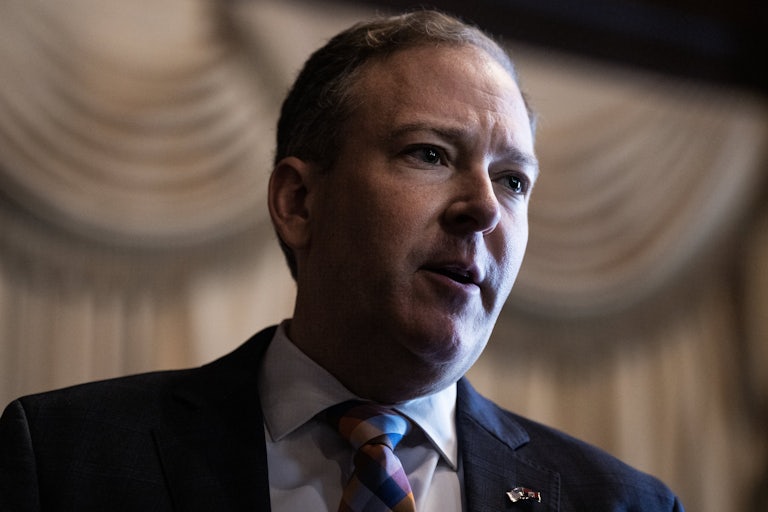Trump Fumbles Key Details of His Own Trade Deals
Donald Trump doesn’t appear to know how his own deals work.
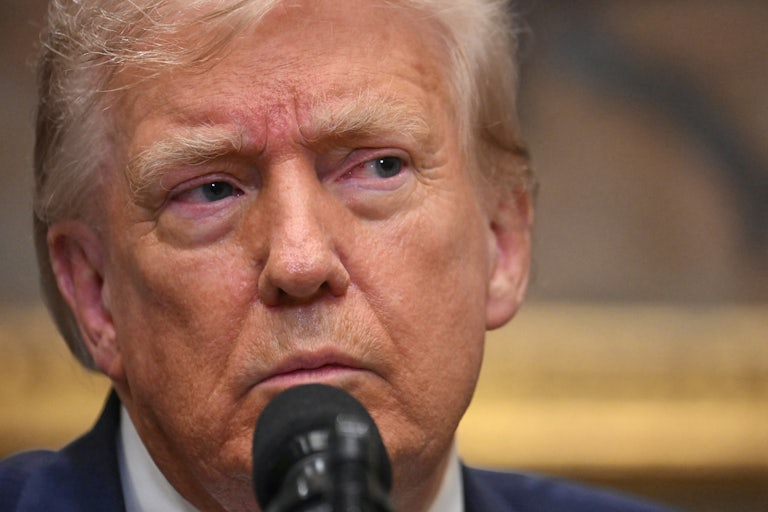
Despite protestations from America’s trading partners, Donald Trump insisted Wednesday that his tariff scheme would pull in trillions of dollars of investment by some of the world’s largest economies.
“I think we’re going to have the richest economy you’ve ever seen,” Trump told reporters at the White House. “We have money coming in that we’ve never even thought about, at numbers nobody has ever seen before.
“We have a deal with Japan where they’re going to pay us $550 billion,” he continued. “We have a deal with Europe where they’re doing $750 billion plus $400 billion, plus $300 billion, and many other countries. It’s likewise, relatively, those are two big ones.”
But those figures are inaccurate, according to Japanese and European leaders.
Ryosei Akazawa, Japan’s top chief negotiator, told public broadcaster NHK on Saturday that he expects just 1 to 2 percent of the $550 billion U.S. fund to be an investment, of which the U.S. and Japan would share the profits at a 90-to-10 ratio. The remainder of the fund would be deployed as a combination of loans and loan guarantees from banks with backing by the Japanese government, reported Bloomberg.
Beyond that, Japan estimates that its new trade deal with the Trump administration would actually save its country money, approximately 10 trillion yen ($68 billion), by way of decreased tariff rates.
“It’s not that $550 billion in cash will be sent to the U.S.,” Akazawa said. “By letting the U.S. have 90 percent of the profits rather than 50 percent, I think Japan’s loss will be at most a couple of tens of billions of yen. People are saying various things, such as, ‘You sold out Japan,’ but they’re wrong.”
Meanwhile, Trump has demanded that Europe reorient its liquefied gas purchases from Russia to the U.S. as a step toward new trading relations. And while European leaders have reiterated the potential of the plan, gas experts are not so convinced that the $750 billion “fantasy” works out.
“We are ready to go for those purchases,” EU trade chief Maroš Šefčovič said Monday, echoing comments from European Commission President Ursula von der Leyen made the day before. “We believe these numbers are achievable.”
Actually following through on the arrangement would require Europe to triple its American imports by 2028, forgoing cheaper offerings from its neighbors, such as Norway, which delivers gas to the continent by pipeline. Even divesting from Russian oil would barely make a dent in Trump’s demand—the European Union imported just $23 billion in oil, gas, and nuclear products from Russia in 2024.
Laura Page, a senior analyst at the Kpler commodities firm, told Politico that the figure was “completely unrealistic.”
“The numbers are just beyond wild,” she said.
